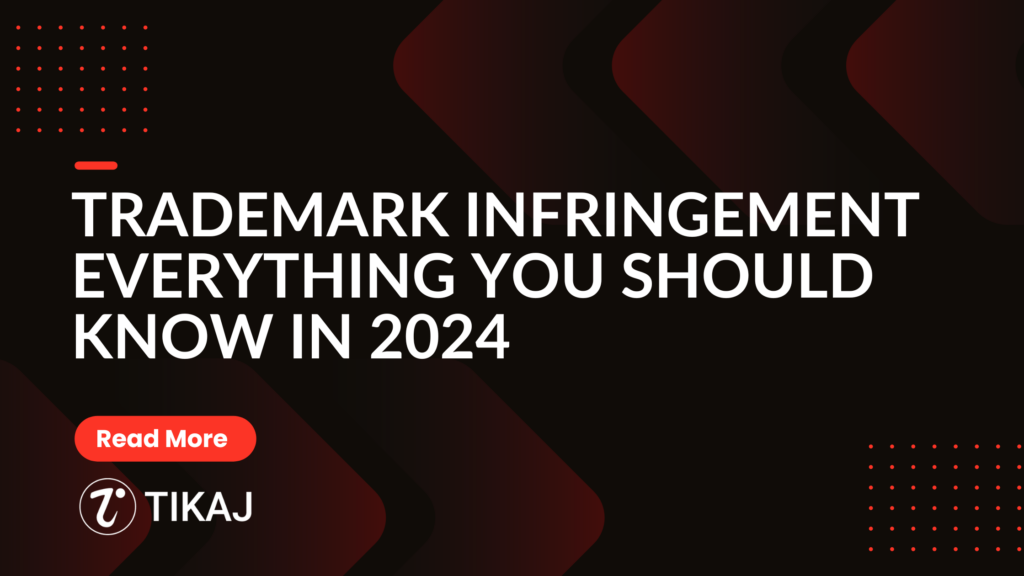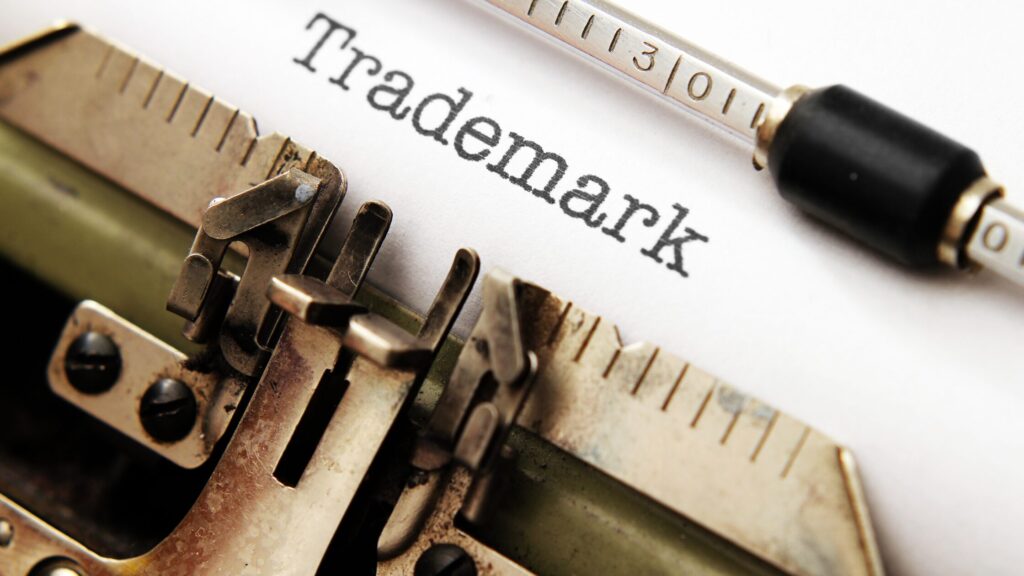What is Trademark Infringement? Everything you should know in 2024

Understanding trademark infringement is crucial for businesses and individuals alike, especially in today’s digital age where the lines can often blur between what constitutes fair use and infringement. Trademark infringement occurs when a sign, usually a brand name or logo, that a business has registered is used by another entity in a way that could confuse consumers. In this article, we will delve into the brief knowledge of Trademark infringement.
Table of Contents
Introduction
The significance of trademarks in commerce cannot be overstated. They not only support brand recognition and loyalty but also contribute to the economic value of a brand through branding and marketing efforts. The unauthorized use of trademarks can lead to a misrepresentation of the source and quality of goods and services, potentially causing financial losses and damage to the reputation of the trademark owner.
What is a Trademark?
Trademarks can consist of words, phrases, symbols, designs, or a combination of these, representing the brand identity in the marketplace. They play a pivotal role in consumer decision-making by signaling the origin and quality of the products or services. The legal protection of trademarks aims to foster fair competition and consumer trust in the market.
What is Trademark Infringement?
Trademark infringement is a violation that occurs when a mark that is identical or confusingly similar to a registered trademark is used without authorization, potentially leading to confusion among consumers. Trademarks serve as a unique identifier for the goods and services of a business, distinguishing them from those of others in the market. This infringement undermines the fundamental purpose of trademarks: to protect the consumer from confusion and the trademark owner from dilution of their brand.
Essential Elements of Trademark Infringement
To establish a case of trademark infringement, several critical elements must be proven:

1. Validity and Legal Protection
The trademark in question must be valid and legally protected under trademark law. This means it has to be distinctive enough to qualify for protection and, ideally, registered with the appropriate governmental authority, although unregistered trademarks may also receive protection under common law based on their use in commerce.
2. Ownership
The party alleging infringement must prove that they are the rightful owner of the trademark. This typically involves demonstrating the mark’s original use in commerce and any registration documents if the mark is registered.
3. Unauthorized Use
There must be unauthorized use of the trademark or a substantially similar mark in commerce. This use must be in connection with the advertisement, distribution, or sale of goods or services, leading to potential or actual consumer confusion.
4. Likelihood of Confusion
A key factor in infringement cases is the likelihood of confusion among the consuming public. This means that the use of a similar mark is likely to cause confusion, mistake, or deception regarding the source, sponsorship, affiliation, or endorsement of goods or services. Courts consider several factors to assess this, including the similarity of the marks, the similarity of the products or services, the strength of the plaintiff’s mark, the intent of the defendant in using the mark, and actual consumer confusion.
Infringement can occur even if the marks are not identical but are sufficiently similar that consumers might mistakenly believe they come from the same source. The overarching concern is the protection of consumers and the preservation of the integrity of trademarks as indicators of source and quality.
Trademark law varies by country, but the principles of protecting consumers from confusion and businesses from unfair competition are universally recognized. The intricacies of trademark infringement law underscore the need for businesses to navigate trademark use and registration carefully to protect their intellectual property rights and maintain the trust and loyalty of their consumers.
You can also read – How to Register a Trademark in India? The Comprehensive 5-Step Beginner Guide.
The Confusion Factor: Core of Infringement
The confusion factor plays a central role in determining trademark infringement. It addresses whether the use of a trademark or a similar mark by another party is likely to confuse consumers regarding the source, sponsorship, or affiliation of goods and services. This factor is the crux of many infringement cases, reflecting the primary objective of trademark law: to prevent consumer confusion and ensure that trademarks serve as reliable indicators of origin.
Likelihood of Confusions
Courts evaluate several factors to assess the likelihood of confusion, including:
- Similarity of the Marks: The visual, auditory, and conceptual similarities of the marks in question are examined. Even if the marks are not identical, close resemblances in appearance, sound, or meaning can lead to confusion.
- Similarity of the Products or Services: The more closely related the products or services are, the higher the chance that consumers will be misled into believing they come from the same source.
- Strength of the Plaintiff’s Mark: Well-known or highly distinctive marks enjoy a broader scope of protection. The strength of a mark can be determined by its uniqueness, recognition, and market presence.
- Evidence of Actual Confusion: While not always required, instances of actual confusion among consumers can strongly support an infringement claim.
- Defendant’s Intent: Courts may consider whether the defendant intentionally sought to create confusion to benefit from the plaintiff’s established reputation.
- Marketing Channels Used: Overlap in marketing and distribution channels can increase the likelihood of confusion.
- Consumer’s Degree of Care: The average consumer’s level of attention and care when purchasing the goods or services in question can affect the assessment. For luxury goods or significant purchases, consumers may be more discerning, potentially reducing confusion.
The evaluation of these factors is not uniform and can vary based on the specific circumstances of each case. The courts seek a balance between protecting trademark rights and fostering healthy competition, ensuring that trademarks function as intended without stifling market dynamics.
Notable Examples of Trademark Infringement

Trademark infringement cases can significantly impact businesses and industries. Some notable examples highlight the complexities and outcomes of such disputes:
- WWF vs. WWE: The World Wildlife Fund (WWF) engaged in a prolonged legal battle with the World Wrestling Federation, which led to the latter changing its name to World Wrestling Entertainment (WWE). This case underscores the global implications of trademark disputes and the importance of distinguishing between unrelated industries to avoid confusion.
- Apple Corps vs. Apple Computer: A dispute arose between Apple Corps, a multimedia company founded by The Beatles, and Apple Computer (now Apple Inc.), concerning the overlap of their trademarks in the music industry. This case illustrates the challenges that emerge as businesses expand into new markets and sectors.
- Starbucks vs. Smaller Businesses: Starbucks has initiated several actions against smaller businesses with similar names or branding elements, such as HaiaBucks and Sambucks. These cases emphasize the vigilance of large corporations in protecting their trademarks and the careful navigation required by smaller entities to avoid infringement.
These examples reflect the broad spectrum of trademark infringement issues that can arise across different sectors and the importance of clear, distinct branding. They also illustrate the legal recourse available to trademark owners and the potential need for businesses to rebrand or negotiate settlements to resolve disputes.
It’s evident that understanding and respecting trademark rights is crucial for businesses of all sizes to maintain their brand integrity and avoid costly legal challenges.
Preventive Measures Against Trademark Infringement
To safeguard businesses and their intellectual property, several preventive strategies can be employed to minimize the risk of trademark infringement. These measures are designed not only to protect one’s own trademarks but also to ensure that new brands or products do not inadvertently infringe on the trademarks of others.
Conduct a Trademark Search
Before registering a new trademark, conducting a comprehensive search is crucial to ensure that the mark is not already in use or too similar to existing trademarks. This can be done through national trademark databases, such as the USPTO in the United States, or through professional trademark search services. A thorough search helps in identifying potential conflicts that could lead to infringement issues later on.
Devise a Truly Unique Brand
Creating a unique and distinctive brand is one of the most effective ways to avoid infringement. This involves selecting a brand name, logo, and other trademark elements that are not only different from existing trademarks but also capable of distinguishing your goods and services in the marketplace. The more unique the trademark, the less likely it is to cause confusion and the stronger the legal protection it can enjoy.
Register Your Trademark
Registering your trademark with the appropriate governmental body provides legal recognition and protection of your brand. In many jurisdictions, trademark registration offers exclusive rights to use the mark on the goods and services listed in the registration, along with legal remedies against infringement. It also serves as a public record of ownership, which can deter potential infringers.
Consider Hiring a Trademark Attorney
Navigating trademark laws and registration processes can be complex. Hiring a trademark attorney can provide valuable guidance on trademark strategy, search, registration, and enforcement. An experienced attorney can help avoid common pitfalls and advise on the best course of action if infringement is suspected.
Think About Insurance
Trademark infringement litigation can be costly. Having insurance that covers intellectual property disputes can provide financial protection against legal expenses and damages awarded in infringement cases. It’s a prudent measure for businesses heavily reliant on their brand identity.
Steps to Take If Your Trademark Is Infringed
Here are steps to take if you suspect your trademark is being infringed upon:
Step 1: Evaluate the Infringement
Determine whether the use of the mark genuinely infringes on your trademark rights. This may involve assessing the likelihood of confusion, the similarity of the goods or services, and the geographical areas in which the marks are used. Consulting with a trademark attorney can help in this evaluation.
Step 2: Send a Cease-and-Desist Letter
Often, the first step in addressing infringement is to send a cease-and-desist letter to the infringing party. This letter formally requests the cessation of the infringing activity and outlines the legal rights of the trademark owner. It can lead to a resolution without resorting to litigation.
Step 3: Report the Infringement to the Trademark Office
If the infringement involves a trademark application or registration that conflicts with your own, reporting the matter to the trademark office (e.g., the USPTO in the United States) can be a necessary step. This may involve filing an opposition to an application or a petition to cancel a registration.
Step 4: Consider Legal Action
If the infringement persists despite cease-and-desist efforts, legal action may be necessary. This can involve filing a lawsuit in the appropriate court to seek an injunction against the infringer and potentially recover damages. Legal action requires careful consideration and consultation with an attorney, as it can be lengthy and expensive.
Addressing trademark infringement effectively requires a proactive and informed approach. By understanding the steps to prevent infringement and how to respond when it occurs, businesses can better protect their valuable trademarks and maintain their brand integrity.
Future Proofing Your Trademarks
Ensuring your trademark remains protected and viable in the face of evolving markets and legal landscapes is crucial. Future-proofing your trademark involves several strategies aimed at maintaining its distinctiveness and legal protection over time.
Regular Use and Monitoring
Continued use of your trademark in commerce is essential to maintain its protection. Regular use helps to demonstrate the mark’s ongoing relevance and can prevent it from becoming generic. Additionally, monitoring the marketplace for potential infringements or similar uses by competitors can help identify issues early on, allowing for timely action to protect your rights.
Expanding Protection
As your business grows, consider expanding your trademark protection to cover new products, services, and geographical areas. Filing for trademark registration in additional categories and countries where you plan to do business can provide broader protection and deter potential infringers.
Renewals and Maintenance
Ensure that your trademark registrations are renewed by the relevant laws and regulations. Failure to renew can result in the loss of legal protection. Staying on top of maintenance filings and administrative requirements is vital to keeping your trademark rights intact.
Educating Your Team
Educating your team about the importance of trademark protection and the risks of infringement can help prevent accidental violations. Training staff on how to recognize potential infringements and the procedures for reporting them can strengthen your company’s overall intellectual property strategy.
Leveraging Technology
Utilize technology solutions for trademark management and monitoring. Several tools can help track the use of your mark across the internet and in trademark registries, alerting you to potential infringements and enabling quicker responses.
You can also read – Top 10 Best Phishing Tools for Advanced Protection (2024)
Conclusion
Trademark infringement is a significant concern for businesses, as it can lead to confusion among consumers, dilute brand identity, and result in financial losses. Understanding the essentials of trademark infringement, including the core principles, notable cases, preventive measures, and steps to take if infringement occurs, is crucial for any business looking to protect its intellectual property.
By implementing strategies for prevention, monitoring, and enforcement, businesses can safeguard their trademarks and maintain the integrity of their brand in the marketplace. Future-proofing efforts, including regular use, expansion of protection, timely renewals, and leveraging technology, are key to ensuring long-term trademark security.
In the dynamic world of commerce and intellectual property, staying informed and proactive in trademark protection is indispensable. As markets evolve and legal frameworks change, a robust approach to trademark management can provide businesses with the stability and confidence needed to thrive.
FAQs
What constitutes trademark infringement?
Trademark infringement occurs when a trademark is used without authorization in a way that could cause consumer confusion regarding the origin of goods or services.
How can I avoid committing trademark infringement?
Conduct thorough trademark searches, ensure your brand is unique, and consider registering your trademark to protect against infringement.
What are some famous examples of trademark infringement cases?
Notable cases include the legal battles between the World Wildlife Fund (WWF) and the World Wrestling Federation (WWE), and between Apple Corps and Apple Computer.






